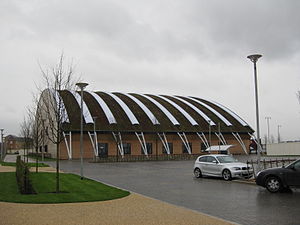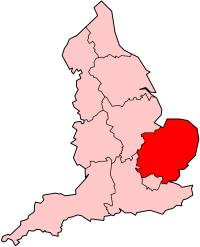 |
| Jane Lambert |
You may have heard of the expression "taking out an injunction" on someone. It's a quaint expression, An injunction sounds a bit like a spell that a wicked witch or magician will cast on your enemy if you cross her or his palm with silver. In fact it refers to a procedure that is designed to ensure that justice is not defeated by a fait accompli.
What is an Injunction?
An injunction is an order of the court to do or refrain from doing something on pain of a fine or imprisonment for disobedience. There are two types of injunction: perpetual and interim.
What is a Perpetual Injunction?
A perpetual injunction is granted at the end of the litigation after the judge has heard all the arguments and considered all the evidence. Orders are usually granted in very broad terms such as
"the defendant is restrained from infringing the claimant's copyright whether by himself, his servants or agents or otherwise howsoever."Such an order is called perpetual because there is no time limit other than the duration of copyright which in the case of an artistic, dramatic, literary or musical work means the life of the author plus 70 years.
What is an Interim Injunction?
An interim injunction lasts until trial or further order. Its purpose is to preserve the status quo until the dispute is resolved. As the court has not yet heard all the evidence and arguments it will make its order in much clearer and narrower terms. Something like this
"the defendant is restrained until after judgment or further order in the meantime from doing or authorizing the following acts:The order is not granted unconditionally. The person seeking the injunction ("the applicant") has to give the court a cross-undertaking in damages. That is to say, the applicant must promise to compensate the other party ("the respondent") if the applicant loses the case or the court decides for some other reason that the injunction should never have been granted.
(1) making or importing copies of the catalogue (a copy of which is annexed to this order marked "A")
(2) distributing such copies in the UK
............................."
The reason for requiring a cross-undertaking in damages is that the court has not decided who is going to win the case and it wants to make sure that as little harm as possible is done to each of the parties in the interval between the issue of the claim form and trial of the action. The respondent will have suffered harm if he wins the case because he will have been prevented from doing something that turns out to have been perfectly lawful for months and possibly years. It is only right that the applicant should compensate him for such harm.
Why might you need an Interim Injunction?
The usual remedies for the infringement (violation) of an intellectual property right are a perpetual injunction against repeating or continuing the infringement and either damages (compensation) or an account of profits (disgorging of the defendant's ill-gotten gains) but there are times when those remedies are just not good enough. Actions for the infringement of an intellectual property right generally take place in two phases. First there is the trial on liability where the court decides whether the defendant has infringed the intellectual property right. That usually takes place a year after the issue of the claim form. The second phase is an inquiry as to damages or an account of profits. That usually takes place a year after the trial on liability. The upshot is that you are likely to wait at least a year for perpetual injunctions and at least two for any money. A defendant can do quite a lot of harm in that time unless restrained by the court or he may run out of money and be unable to pay you any damages at the end of the day. If either of those things happen you will have spent a lot of money, time and effort for nothing. It is to prevent such injustice that the court grants interim injunctions to restrain such wrongdoing in appropriate cases.
Which Courts grant Interim Injunctions?
All courts except the small claims track of the Intellectual Property Enterprise Court ("IPEC") have jurisdiction to grant interim injunctions. Although the IPEC multi-track has jurisdiction to grant such orders it is reluctant to do so because of the cost and time limits that apply to that court. If you want an interim injunction you should bring your case in the Chancery Division of the High Court in London or possibly Manchester, Liverpool, Leeds, Newcastle, Bristol, Birmingham, Cardiff, Caernarfon, Mold or Preston if the case or either of the parties has a connection with any of those towns.
How do the Courts decide whether to grant or refuse an Interim Injunction?
The principles were set out by Lord Diplock in a speech to the House of Lords in a case called American Cyanamid Co v Ethicon Ltd. [1977] FSR 593, [1975] AC 396, [1975] 1 All ER 504, [1975] 2 WLR 316, [1975] UKHL 1.
- First, the judge decides whether the applicant can win. If he can't there is no point in granting an injunction. The judge is not concerned with the strength of either party's case at this point. And he can't really make a determination on the merits until he has seen all the evidence and heard all the arguments.
- Secondly, he decides whether the applicant can be compensated adequately in damages if he refuses the order. if he can the judge refuses the order because the claimant will get his injunction after trial and damages after an inquiry. But if the respondent does not appear to have any money or if damages would be impossible or very difficult to calculate the judge will move on to the next question.
- Thirdly, the judge decides whether the applicant can compensate the respondent in damages on his cross-undertaking. If he can he will grant the order but if not he will move on to the final question.
- Lastly, he will weight all relevant considerations such as the strengths of each party's case as it appears at this point and whether there are any alternatives to an injunction such as a Brupat order where the defendant pays a percentage of his revenues into an escrow account or a speedy trial.
If the circumstances in which the order was made change either party can come back to court to seek he discharge or variation of the order.
What you should consider before seeking an Interim Injunction
The first thing to consider is whether it is worth it. To get an injunction application before the court you must issue and serve a claim form (if you have not already done so) and an application notice with a draft order attached and prepare at least a couple of witness statements that address each of the considerations mentioned above. Then you must prepare the arguments for at least a two hour hearing before the judge. Whether you do it or your lawyers do it such preparation will take a lot of time and cost a lot of money. Possibly £15,000 when everything is taken into account. And you have to be prepared to pay a similar sum of money to the other side within 14 days if you lose your application though you may get back a contribution to your costs if you win.
Secondly, as you will have to offer a cross-undertaking as to damages and you must satisfy yourself and show that you are able to afford it.
Thirdly, you mustn't dither. There is an old maxim or saying that "delay defeats equity". What that means in practice is that you have to make your application at the earliest practical moment. The court will allow you a day or so to get your evidence together, take advice and raise the money but that's it. If you sit on your hands a week or so or indeed even a week you are sending out the signal that it is not so urgent. During that time the defendant is spending time and money on launching his brand or product. If you leave it too late the status quo changes and you are the one seeking to change it.
What you should consider if you are a Respondent
Again you have to decide whether it is worth the cost and risk of defending the application. If you can live with the injunction then you can save yourself a lot of time and money by offering an undertaking. You are still entitled to a cross-undertaking in damages from the other side so make sure that you get it and that the other side is good for the money. If there is a problem you can offer the other side an alternative such as keeping proper accounts and records or a Brupat order. If you and the other side can't reach agreement, make sure that your witness statement explains why you have a problem and the steps you have taken to help the applicant in your witness statement.
What happens at the Hearing?
If the hearing of the application is likely to last more than 2 hours a date will have to be fixed for it to be heard as an application by order. Ideally the parties should agree a timetable for filing evidence and other arrangements. If they can't agree both sides will have to attend the interim applications judge who will give directions.
If the application is likely to last less than 2 hours you must attend the interim applications judge in the Rolls Building if the hearing takes place in London or the Civil Justice Centre or Crown Court elsewhere. The applications judge will read the list of cases and the applicant or his counsel replies either "effective" or "ineffective" followed by a time estimate as the case may be. Anything else risks wasting the time of the judge. The application is effective something is likely to be contested. It is ineffective if everything is agreed. The judge then goes through the list taking the shorter applications first.
The application proceeds entirely on written evidence. It is very rare for witnesses to be called. In my 37 years at the Bar I have seen a witness called only once on an interim application and that was a committal hearing. The applicant opens, refers the judge to his evidence and makes his submissions. The defendant makes submissions in reply. The applicant then answers the respondent's submissions. The judge then makes his decision.
Further Information
The procedure is governed by Parts 23 and 25 of the Civil Procedure Rules and the Part 23A and Part 25A Practice Directions. You must also make yourself familiar with pages 18 to 28 of the Chancery Guide and Interim Applications in the Chancery Division: A Guide for Litigants in Person which contains useful information even for professionals. If you'd like to discuss this subject further, give me a ring on 020 7404 5252 during office hours or message me through my contact form.








